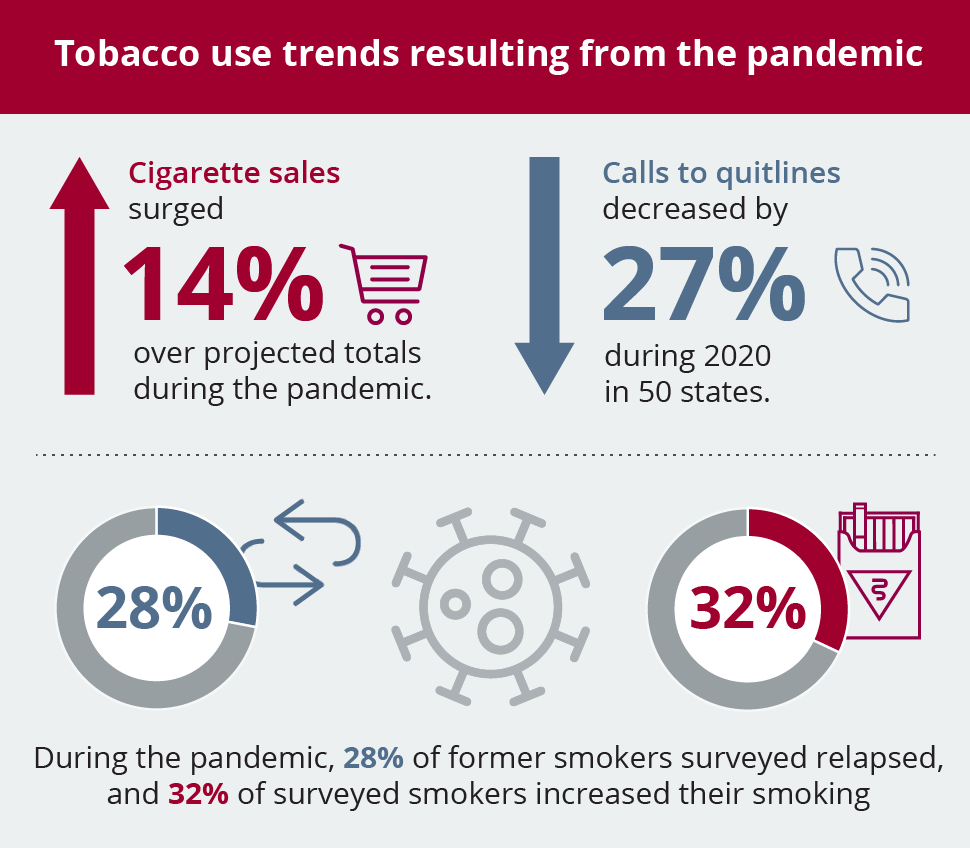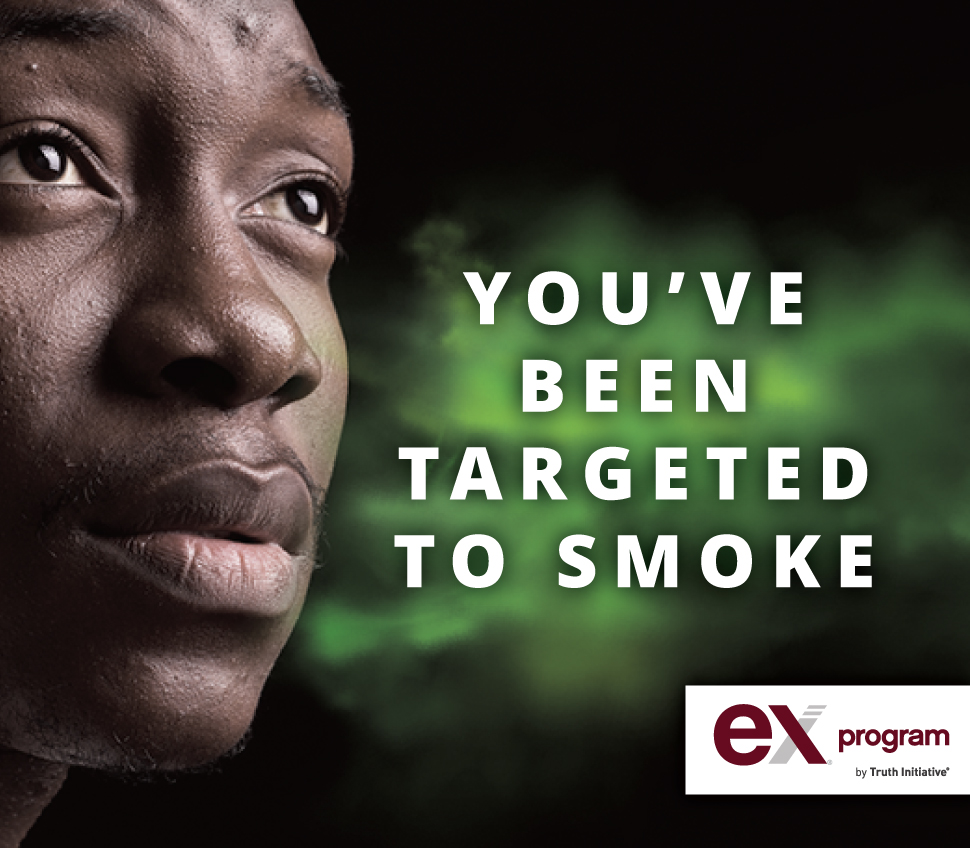Because tobacco use trends show a decline in cigarette smoking over the past several decades, it’s easy to imagine this downward trajectory would continue. Unfortunately, the truth is more complicated.
According to a new report from the Centers for Disease Control (CDC), nearly 1 in 5 U.S. adults reported tobacco use in 2020. That’s about 19%, or 47 million American adults. Cigarettes are still the most commonly used tobacco product at 12.5%, followed by e-cigarettes at 3.7%. Overall, this represents a decrease from previous years.
While it’s encouraging to see a slight decline in tobacco use, there are some crucial numbers to keep in mind going forward.
Tobacco use trends resulting from the pandemic
One aspect of the report that’s not covered is the effect of the pandemic, which kept millions of people at home in lockdown mode. The result of that stress, isolation, and boredom is still being researched. However, we do have a few insights on tobacco use trends that could cause future shifts:
- Cigarette sales surged 14% over projected totals during the pandemic. Theories explaining the rise in cigarette usage include the mental health impact of lockdowns, as well as stockpiling of cigarettes, especially early on in the pandemic.
- Calls to quitlines in all 50 states decreased by 27% in 2020, which doesn’t mean people quit on their own successfully. Instead, it implies there was a significant drop in cessation treatment utilization, as people stopped trying to quit.
- During the pandemic, 28% of former smokers surveyed relapsed, and 32% of surveyed smokers increased their smoking, according to a Journal of General Internal Medicine study. The most prevalent reason reported for increasing smoking was higher overall stress. These results are similar to tobacco use trends in the wake of other historically stress-provoking events with national or global impact. For example, tobacco use surged after the 9/11 attacks when over a million former smokers started smoking again.
Stats like these emphasize the strong link between stress and tobacco use. Keep in mind that stress doesn’t just drive addiction. Chronic stress can have other very serious costly health effects, such as increased risk of cardiovascular disease—a problem that is also worsened by tobacco use.
Persistent disparities continue
Another major factor to consider with tobacco use is ongoing disparities among tobacco users.
Many times, these populations already face considerable obstacles for their health, including difficulties with access. Here’s a portion of the same list, with research showing the type of health difficulties they face:
- Rural residents: Less likely to have health insurance, and often can’t find a health provider within an hour of their homes.
- Low-income adults: Even those who are healthy face higher health risks than higher-income people.
- Lesbian, gay and bisexual: Stigma and discrimination are still major problems for these individuals in healthcare systems.
As this demonstrates, the type of challenges each group faces are unique and are often multi-layered.
How tailored strategies help
The CDC report notes that tailored strategies and policies could reduce the effects of inequitable conditions, and lead to reduced disparities in tobacco use.
For example: Ending the sale of menthol cigarettes can help Black communities, which have much higher rates of menthol use than other groups.
At the EX Program, to engage Black menthol smokers in quitting, for example, we tailor promotions by using tried and tested campaigns such as this one.
Equitably implementing tobacco control interventions and cessation services are essential for maintaining progress toward reducing tobacco-related death and disease in the U.S.
Using a program that combines insight into disparities with an easily accessible digital format and tailored promotions to engage diverse populations can help you achieve your organization’s health equity goals.
Learn more about how the EX Program can uniquely support you—whether you are an employer or health plan—in engaging more individuals in quitting tobacco for good.













